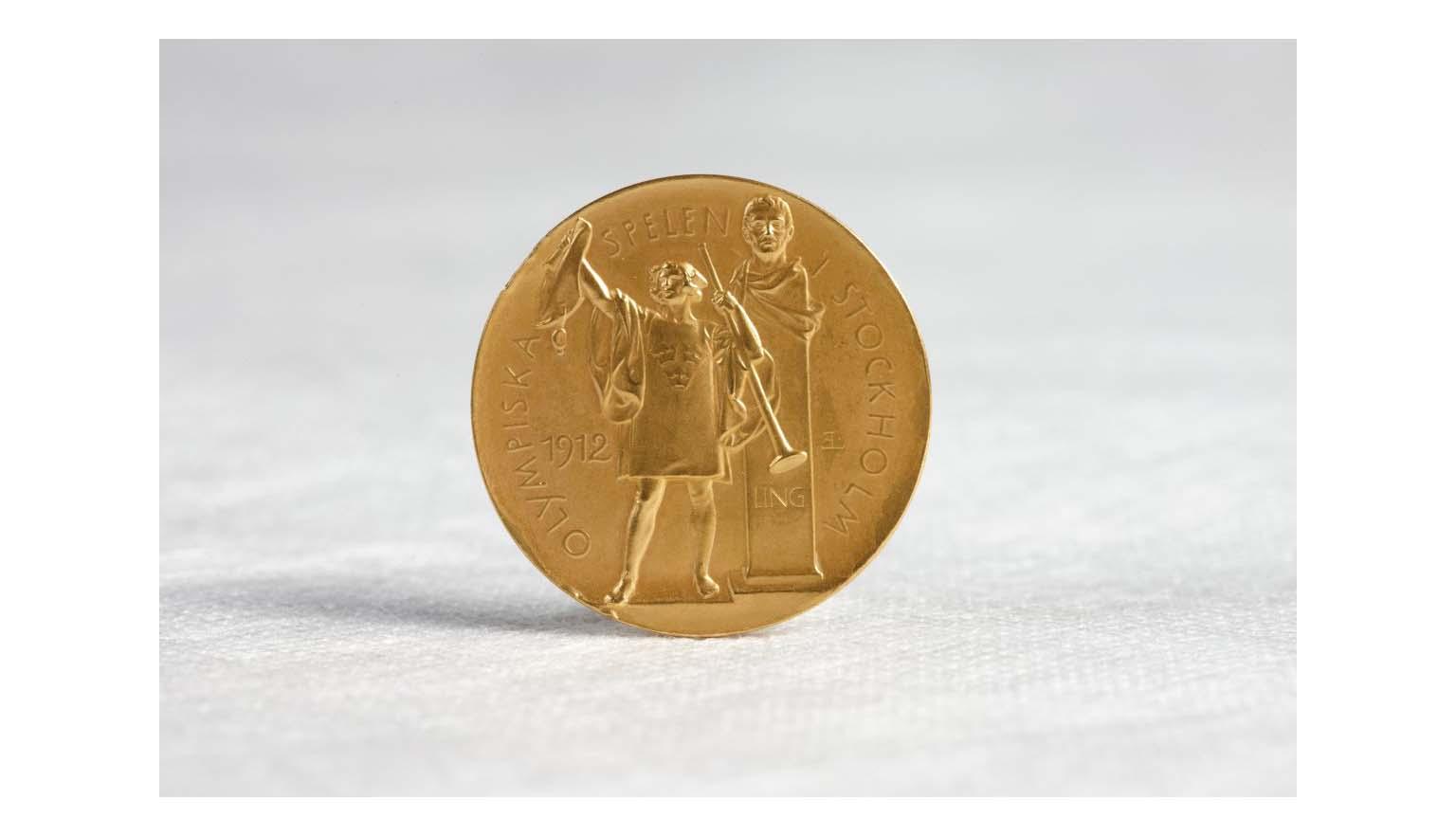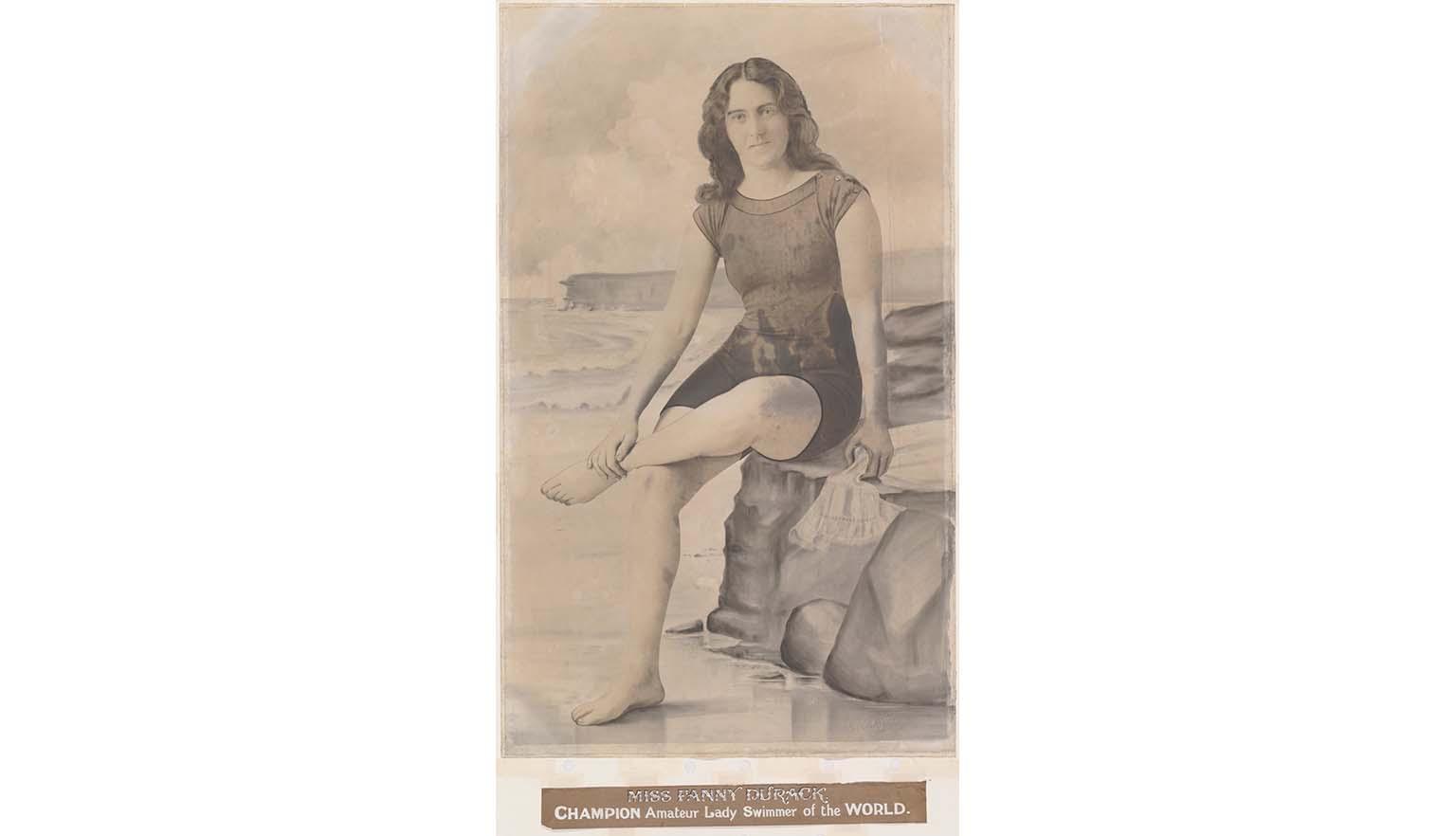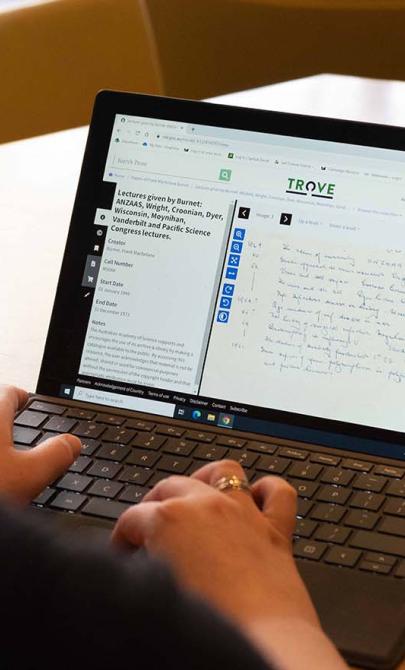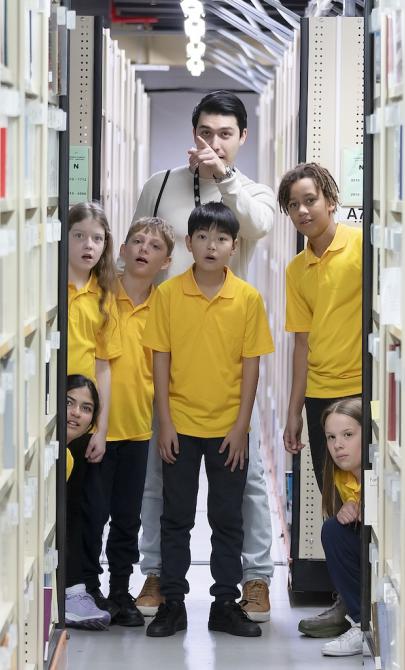Fanny Durack
A breakthrough for women in sport
The inclusion of women in Olympic swimming increased the total number of female competitors at the Games to 48, compared to 2,359 male competitors.
Australian success in Stockholm
Australia’s 2 female entrants—Sarah Frances (Fanny) Durack (1889–1956) and Wilhelmina (Mina) Wylie (1891–1984)—made history when they won the gold and silver medals respectively in the 100 metres freestyle. Their success came despite both women initially facing opposition to their inclusion in the Australian team.
Durack’s legacy
Durack became the first female gold medallist in Olympic swimming history. At one point in her career, she held every world freestyle record from 100 yards to one mile. Her gold medal, now held in the Library's collection, is made of pure gold. It was presented by her brother, Frank Clement Durack.
Learning activities
Activity 1: Barriers to women in swimming
Tell students that there was a time when women were not allowed in public swimming venues.
- Ask them to brainstorm reasons why women were excluded from Olympic swimming.
- Encourage students to explore why women wanted to swim and what challenges they may have faced.
Activity 2: Attitudes to mixed bathing
Use Trove to find newspaper articles about attitudes to mixed bathing around the turn of the 20th century.
Suggested articles:
- Is mixed bathing immodest? Barrier Miner (Broken Hill, NSW : 1888 - 1954), 19 August 1911, p. 5.
- A Plea for Ladies' Swimming Baths The Sydney Morning Herald, 18 February 1891, p. 8 (Letter to the Editor)
After reading the second article, ask students to write their own letter to the editor.
They should imagine they are writing in about 1900 and expressing support for changing the rule that women should not swim in the company of men.
Activity 3: Pioneers of women’s Olympic swimming
Ask students to research Fanny Durack and Mina Wylie and their role in the early days of women’s Olympic swimming.
- Direct students to the oral history recording of Mina Wylie.
- Locate the results of their swimming race at the 1912 Stockholm Olympics and compare them with the current world record for the women’s 100 metre event.
- Ask students to brainstorm possible reasons for the difference in times, considering changes in training, technique, technology and access to sport.
Activity 4: Olympian profiles
Ask students to research the lives of famous Olympians, both men and women.
- Compile a class wall display of their findings.
- Follow with a discussion about shared qualities among these athletes, such as discipline, resilience and motivation.





